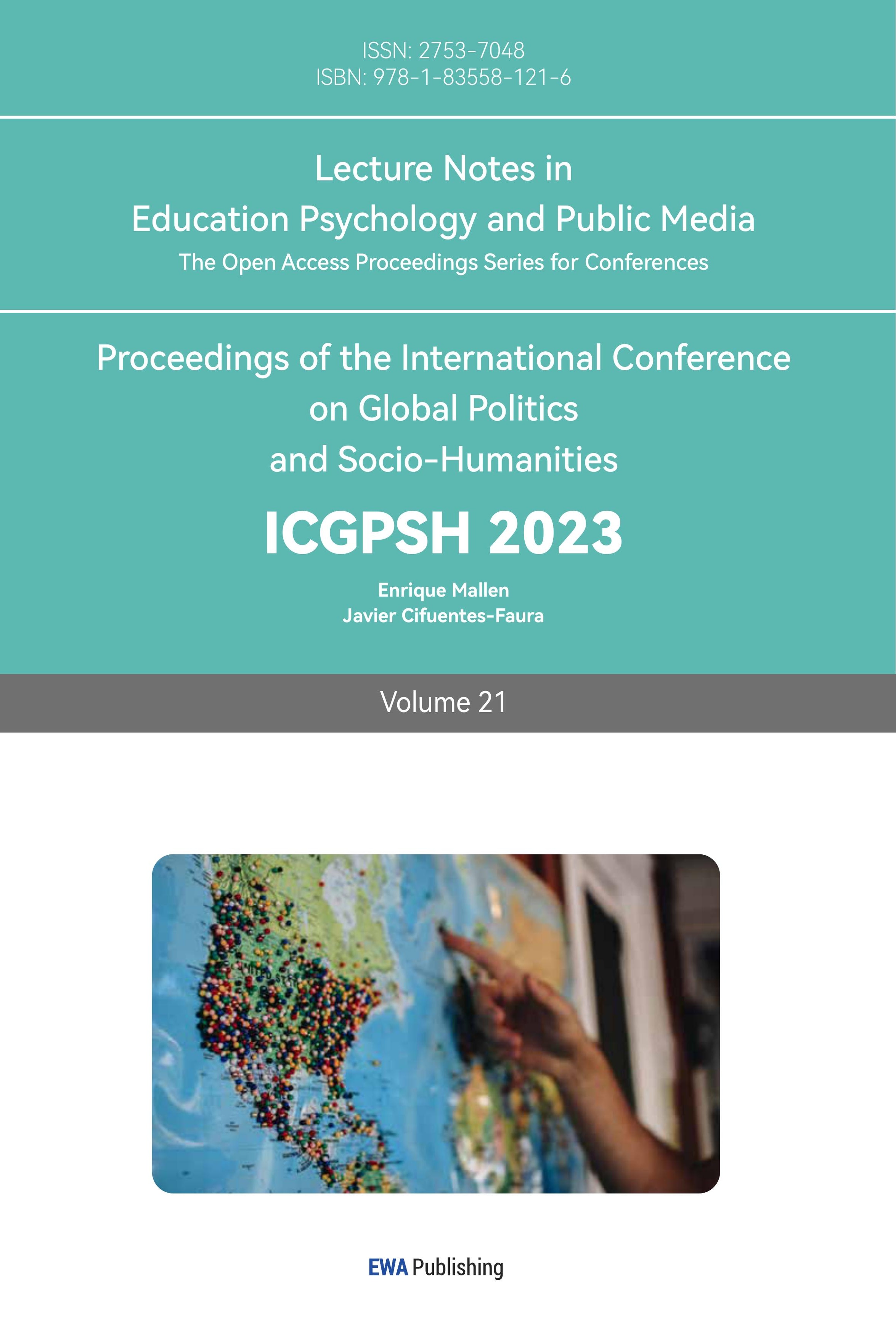References
[1]. Jiang Shaojie. (2019). Research on the Problem of the Impact of Compulsory Education Financial Expenditures on Family Investment in Education (Master’s thesis, Nanjing University of Finance and Economics).
[2]. Gong Yuhan, Zhang Jinhua & Chen Bo’ou. (2023). Substitution or Complementarity: Public Education Finance and Household Education Savings - Empirical Evidence from the Chinese Family Tracking Survey (CFPS). Journal of Shanxi University of Finance and Economics (02), 45-58.
[3]. Li, Li-Hsing & Zhou, Guang-Su. (2015). Household Borrowing Constraints, Public Education Expenditures, and Social Mobility. Economics (Quarterly) (01), 65-82.
[4]. Jia, N. & Liu, G.S.. (2017). Can equalization of compulsory education effectively reduce household out-of-school education expenditure. Peking University Education Review (01),154-172+192.
[5]. Fang, Chao. (2021). Public Education Financial Input, Household Education Expenditure and Cognitive Ability Development of Compulsory Education Students. Journal of National Institute of Educational Administration (08), 25-34.
[6]. Fang, Chao & Huang, Bin. (2022). Crowding in or crowding out: the impact of public education financial investment on household education expenditure. Educational Research (02), 150-159.
[7]. Wang, Xiaoxia & Wu, Binzhen. (2022). The impact of total and structural investment in education on educational outcomes. Economic Science (04),154-168.
[8]. Liu, W.J., Song, H. & Chen, S.I.. (2022). How education finance affects household human capital investment: facts, mechanisms and policy implications. Financial Studies (09), 93-110.
[9]. Wei, Yi. (2022). Redistributive effects of public financial investment in basic education: an empirical analysis based on household survey data. China Institute of Educational Fiscal Science, Peking University. (eds.) China Education Fiscal Policy Consultation Report (2019-2021) (pp. 467-483).
[10]. Ziyao Zhang. (2018). The Impact of Public Education Expenditure on Household Education Expenditure and Its Rural-Urban Differences (Master’s thesis, Xiamen University).
Cite this article
Chen,Q. (2023). Impact of the Financial Resources Allocated to Education in Each Region on Family Investment in Education at the Compulsory School Level. Lecture Notes in Education Psychology and Public Media,21,251-260.
Data availability
The datasets used and/or analyzed during the current study will be available from the authors upon reasonable request.
Disclaimer/Publisher's Note
The statements, opinions and data contained in all publications are solely those of the individual author(s) and contributor(s) and not of EWA Publishing and/or the editor(s). EWA Publishing and/or the editor(s) disclaim responsibility for any injury to people or property resulting from any ideas, methods, instructions or products referred to in the content.
About volume
Volume title: Proceedings of the International Conference on Global Politics and Socio-Humanities
© 2024 by the author(s). Licensee EWA Publishing, Oxford, UK. This article is an open access article distributed under the terms and
conditions of the Creative Commons Attribution (CC BY) license. Authors who
publish this series agree to the following terms:
1. Authors retain copyright and grant the series right of first publication with the work simultaneously licensed under a Creative Commons
Attribution License that allows others to share the work with an acknowledgment of the work's authorship and initial publication in this
series.
2. Authors are able to enter into separate, additional contractual arrangements for the non-exclusive distribution of the series's published
version of the work (e.g., post it to an institutional repository or publish it in a book), with an acknowledgment of its initial
publication in this series.
3. Authors are permitted and encouraged to post their work online (e.g., in institutional repositories or on their website) prior to and
during the submission process, as it can lead to productive exchanges, as well as earlier and greater citation of published work (See
Open access policy for details).
References
[1]. Jiang Shaojie. (2019). Research on the Problem of the Impact of Compulsory Education Financial Expenditures on Family Investment in Education (Master’s thesis, Nanjing University of Finance and Economics).
[2]. Gong Yuhan, Zhang Jinhua & Chen Bo’ou. (2023). Substitution or Complementarity: Public Education Finance and Household Education Savings - Empirical Evidence from the Chinese Family Tracking Survey (CFPS). Journal of Shanxi University of Finance and Economics (02), 45-58.
[3]. Li, Li-Hsing & Zhou, Guang-Su. (2015). Household Borrowing Constraints, Public Education Expenditures, and Social Mobility. Economics (Quarterly) (01), 65-82.
[4]. Jia, N. & Liu, G.S.. (2017). Can equalization of compulsory education effectively reduce household out-of-school education expenditure. Peking University Education Review (01),154-172+192.
[5]. Fang, Chao. (2021). Public Education Financial Input, Household Education Expenditure and Cognitive Ability Development of Compulsory Education Students. Journal of National Institute of Educational Administration (08), 25-34.
[6]. Fang, Chao & Huang, Bin. (2022). Crowding in or crowding out: the impact of public education financial investment on household education expenditure. Educational Research (02), 150-159.
[7]. Wang, Xiaoxia & Wu, Binzhen. (2022). The impact of total and structural investment in education on educational outcomes. Economic Science (04),154-168.
[8]. Liu, W.J., Song, H. & Chen, S.I.. (2022). How education finance affects household human capital investment: facts, mechanisms and policy implications. Financial Studies (09), 93-110.
[9]. Wei, Yi. (2022). Redistributive effects of public financial investment in basic education: an empirical analysis based on household survey data. China Institute of Educational Fiscal Science, Peking University. (eds.) China Education Fiscal Policy Consultation Report (2019-2021) (pp. 467-483).
[10]. Ziyao Zhang. (2018). The Impact of Public Education Expenditure on Household Education Expenditure and Its Rural-Urban Differences (Master’s thesis, Xiamen University).









